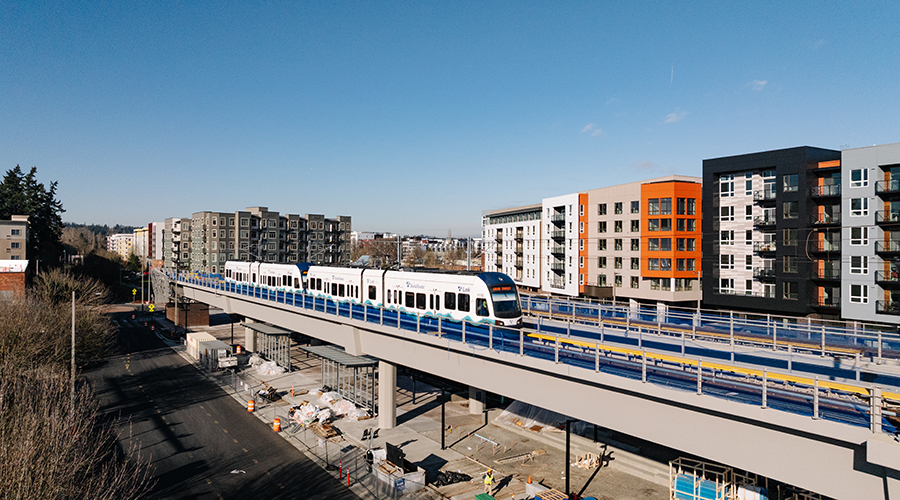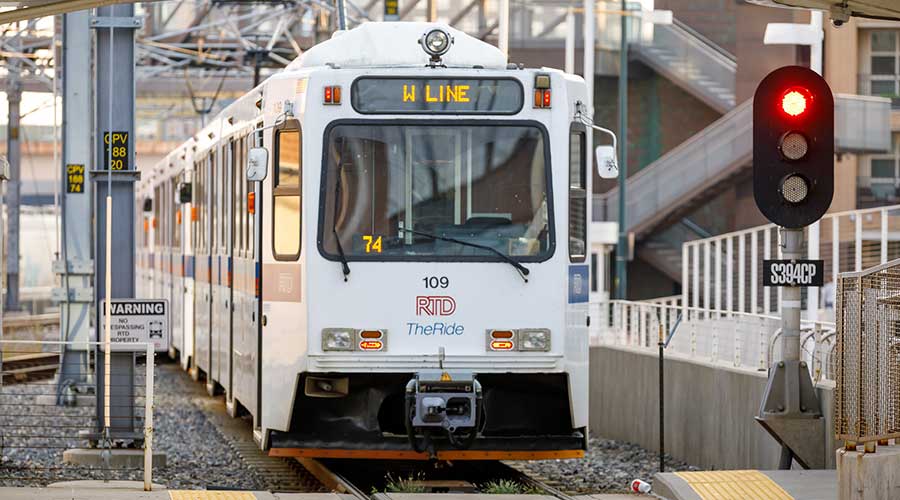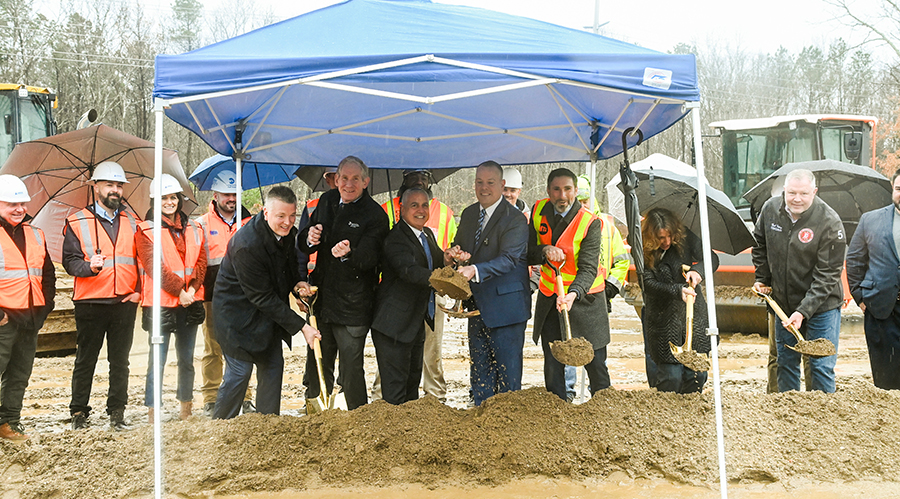Newsletter Sign Up
Stay updated on news, articles and information for the rail industry
Stay updated on news, articles and information for the rail industry
Rail News Home
High-Speed Rail
Rail News: High-Speed Rail
6/20/2011
Rail News: High-Speed Rail
HSR a hot topic at APTA Rail Conference
advertisement
As recently as a few years ago, the American Public Transportation Association wouldn’t have included high-speed rail sessions at its annual Rail Conference. This year’s conference, held June 12-15 in Boston, featured several.
As HNTB Corp. Vice President-High Speed Rail Programs Director Robert Doty said at the tail end of the June 14 session he moderated, “The Case for Interoperability” — “You wouldn’t have heard these words [high-speed rail] five or 10 years ago. There is tremendous progress being made. We just have to deliver.”
Leading the delivery effort is the Federal Railroad Administration. On June 13, Federal Railroad Administrator Joseph Szabo addressed a standing-room-only crowd anxious to hear Szabo’s thoughts on High-Speed Intercity Passenger Rail program progress. Here are a few of his comments:
• “There’s no question that there’s a demand from the public for improved high-speed and intercity passenger rail. You take a look at the interest from the states, look at the applications we’ve gotten in — there’s been more than 500 applications from 39 states requesting more than $75 billion in funding since the program started.”
• Regarding international investment in U.S. high-speed rail systems: “We’re in a global society. We are saying that those that want to build and supply equipment will have to build plants here and hire workers here, but clearly with the understanding that it will be to a great extent foreign firms that will be doing [the work].”
• Regarding near-term funding challenges: “There’s no question the budget is tight, but the president believes there are investments that have to be made. And while he’s committed to making significant cuts, he believes investments need to be made in transportation, including the high-speed rail program.”
• Regarding when a request for proposals for equipment purchases in California and the Midwest will be issued: “Pretty quick. We’re hot on that; we want to get it done.”
• Regarding how industry stakeholders can help advance high-speed rail efforts: “Whether it’s to elected officials in Congress or average citizens, we have to explain how important this is to their future. I believe the grass-root citizenry are ahead of the elected officials in D.C., so it becomes a matter of cultivating the communication so that their needs and concerns flow up to those that will be casting the votes.”
Some advice from the U.K.
Officials overseeing high-speed rail projects in other countries offered ideas on how the United States can continue to push high-speed development, as well. During the session “Global Case Studies of Emerging High-Speed Rail Programs,” Andrew McNaughton, chief engineer of the United Kingdom’s HS2 project, advised:
• “Create your own high-speed strategy to meet your own needs.”
• “You have to be clear on what the problem is that you’re trying to solve. [And] you have to get politicians to agree what the problem statement is. Only then can you move on.”
• “Start with the commercial and business requirements; don’t focus on the technology.”
• “Be wary of assuming premium fares. Even small premiums choke off demand. People would rather hitchhike than pay a premium.”
• “Don’t think this is the answer to every green problem. High-speed rail will not save the planet. It’s a lower-carbon travel option than a car, but the whole point of it is to carry a lot of people."
• “Every route impact is precious to someone, and they’re not silent in this world. They have an instant impact with social media. Within hours, you’re on national news because someone’s found a rare bat, and two hours after somebody invented this bat, it’s national news because it went viral,” McNaughton said, referring to a species of bats that were discovered earlier this month living in the woods along the proposed HS2 route.
• “Consult early and often. Once established, myths live on. Everybody now knows that within 110 yards of our railway line, no living creature can survive,” McNaughton joked.
• “Do worry about forging solid, very long-lasting political and public support. Get in at the grass roots, otherwise the solid support we get today will be gone in two or three years [as political climates change].”
U.S. high-speed stakeholders know that all too well. And now that the political winds have shifted in the United States, discussion about high-speed rail development is beginning to shift to (or at least incorporate) thoughts on how stakeholders can help advance high-speed rail projects and raise awareness of (and support for) high-speed and faster intercity passenger trains. It’s one thing to sit in a conference room and listen to presentations about high-speed rail; it’s another to get out there and advocate for it. And it’s becoming increasingly clear that intelligent discussion about high-speed rail needs to move beyond the confines of hotel convention centers and into the public arena.
As HNTB’s Doty put it: “I can’t emphasize enough — the average person has no idea what the product is. They think it’s something that’s going to happen to them, not for them. Once this thing cracks open, and you’ve seen it all over the world, it goes crazy. But we haven’t figured out how to break that code yet.”
— Angela Cotey
As HNTB Corp. Vice President-High Speed Rail Programs Director Robert Doty said at the tail end of the June 14 session he moderated, “The Case for Interoperability” — “You wouldn’t have heard these words [high-speed rail] five or 10 years ago. There is tremendous progress being made. We just have to deliver.”
Leading the delivery effort is the Federal Railroad Administration. On June 13, Federal Railroad Administrator Joseph Szabo addressed a standing-room-only crowd anxious to hear Szabo’s thoughts on High-Speed Intercity Passenger Rail program progress. Here are a few of his comments:
• “There’s no question that there’s a demand from the public for improved high-speed and intercity passenger rail. You take a look at the interest from the states, look at the applications we’ve gotten in — there’s been more than 500 applications from 39 states requesting more than $75 billion in funding since the program started.”
• Regarding international investment in U.S. high-speed rail systems: “We’re in a global society. We are saying that those that want to build and supply equipment will have to build plants here and hire workers here, but clearly with the understanding that it will be to a great extent foreign firms that will be doing [the work].”
• Regarding near-term funding challenges: “There’s no question the budget is tight, but the president believes there are investments that have to be made. And while he’s committed to making significant cuts, he believes investments need to be made in transportation, including the high-speed rail program.”
• Regarding when a request for proposals for equipment purchases in California and the Midwest will be issued: “Pretty quick. We’re hot on that; we want to get it done.”
• Regarding how industry stakeholders can help advance high-speed rail efforts: “Whether it’s to elected officials in Congress or average citizens, we have to explain how important this is to their future. I believe the grass-root citizenry are ahead of the elected officials in D.C., so it becomes a matter of cultivating the communication so that their needs and concerns flow up to those that will be casting the votes.”
Some advice from the U.K.
Officials overseeing high-speed rail projects in other countries offered ideas on how the United States can continue to push high-speed development, as well. During the session “Global Case Studies of Emerging High-Speed Rail Programs,” Andrew McNaughton, chief engineer of the United Kingdom’s HS2 project, advised:
• “Create your own high-speed strategy to meet your own needs.”
• “You have to be clear on what the problem is that you’re trying to solve. [And] you have to get politicians to agree what the problem statement is. Only then can you move on.”
• “Start with the commercial and business requirements; don’t focus on the technology.”
• “Be wary of assuming premium fares. Even small premiums choke off demand. People would rather hitchhike than pay a premium.”
• “Don’t think this is the answer to every green problem. High-speed rail will not save the planet. It’s a lower-carbon travel option than a car, but the whole point of it is to carry a lot of people."
• “Every route impact is precious to someone, and they’re not silent in this world. They have an instant impact with social media. Within hours, you’re on national news because someone’s found a rare bat, and two hours after somebody invented this bat, it’s national news because it went viral,” McNaughton said, referring to a species of bats that were discovered earlier this month living in the woods along the proposed HS2 route.
• “Consult early and often. Once established, myths live on. Everybody now knows that within 110 yards of our railway line, no living creature can survive,” McNaughton joked.
• “Do worry about forging solid, very long-lasting political and public support. Get in at the grass roots, otherwise the solid support we get today will be gone in two or three years [as political climates change].”
U.S. high-speed stakeholders know that all too well. And now that the political winds have shifted in the United States, discussion about high-speed rail development is beginning to shift to (or at least incorporate) thoughts on how stakeholders can help advance high-speed rail projects and raise awareness of (and support for) high-speed and faster intercity passenger trains. It’s one thing to sit in a conference room and listen to presentations about high-speed rail; it’s another to get out there and advocate for it. And it’s becoming increasingly clear that intelligent discussion about high-speed rail needs to move beyond the confines of hotel convention centers and into the public arena.
As HNTB’s Doty put it: “I can’t emphasize enough — the average person has no idea what the product is. They think it’s something that’s going to happen to them, not for them. Once this thing cracks open, and you’ve seen it all over the world, it goes crazy. But we haven’t figured out how to break that code yet.”
— Angela Cotey


 LRW Honors Amtrak’s Acheson As Railway Woman Of The Year
LRW Honors Amtrak’s Acheson As Railway Woman Of The Year
 From Editor-In-Chief Foran: Of Gender Equity And Inclusion
From Editor-In-Chief Foran: Of Gender Equity And Inclusion
 Spotlight On Some Of Today’s Rail Safety Products
Spotlight On Some Of Today’s Rail Safety Products
 Women of Influence in Rail eBook
Women of Influence in Rail eBook
 railPrime
railPrime







